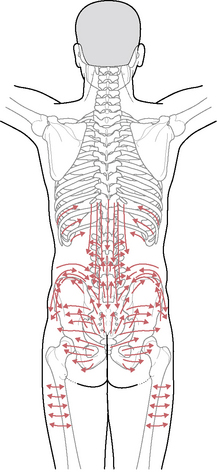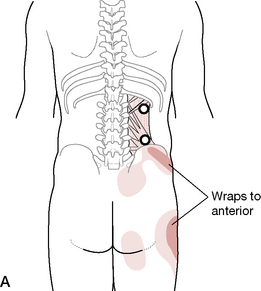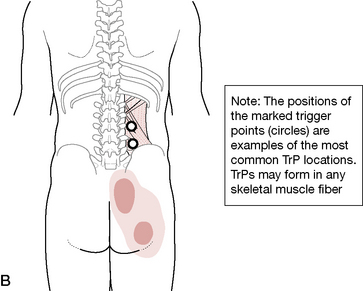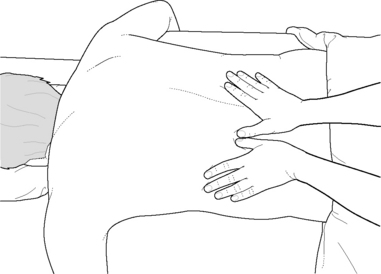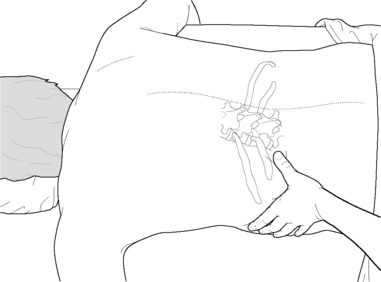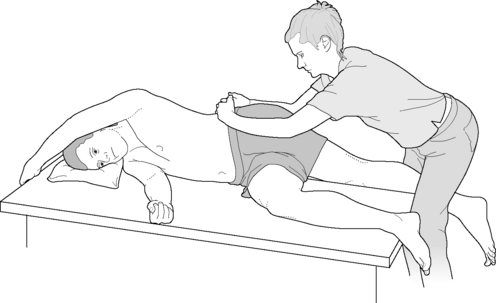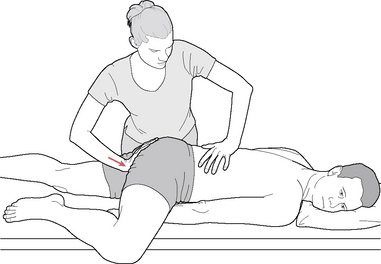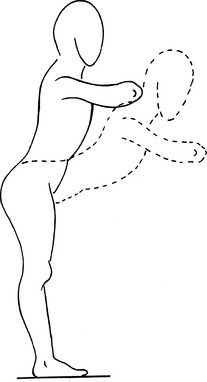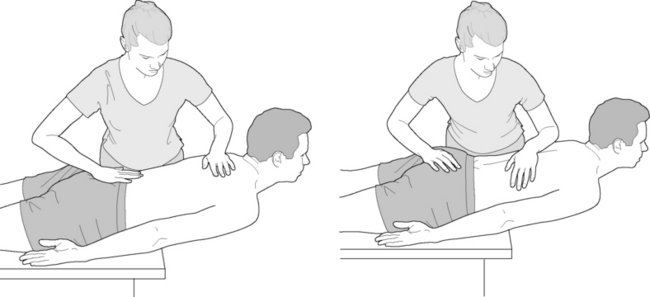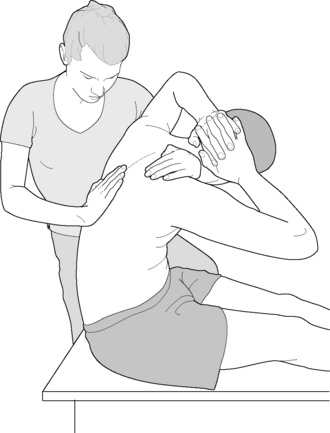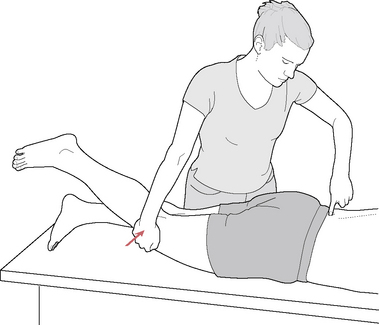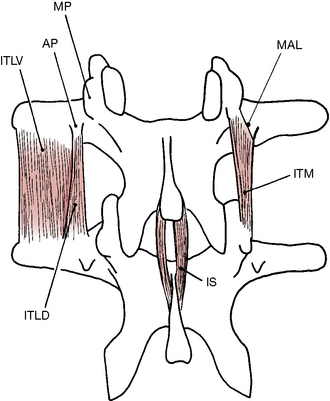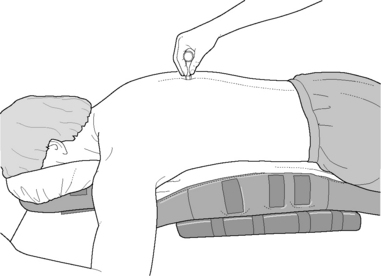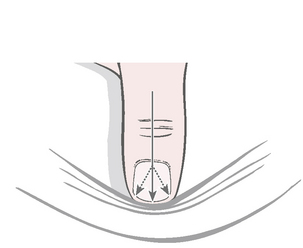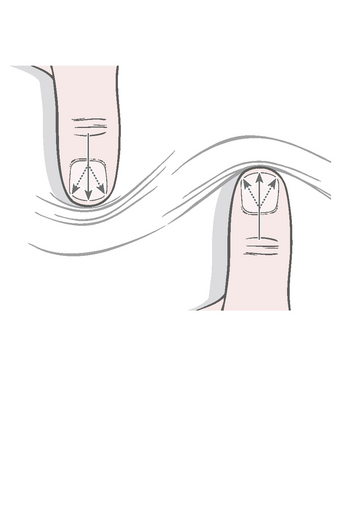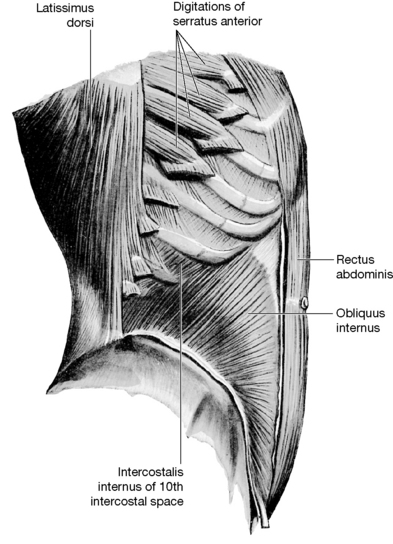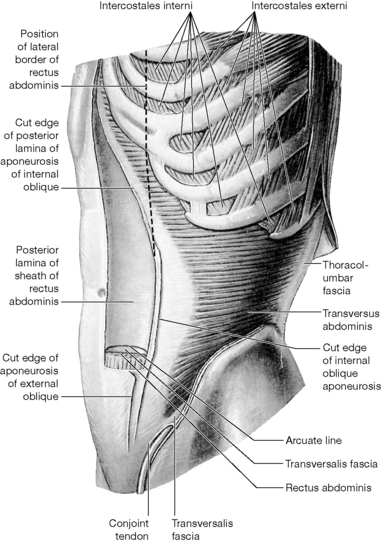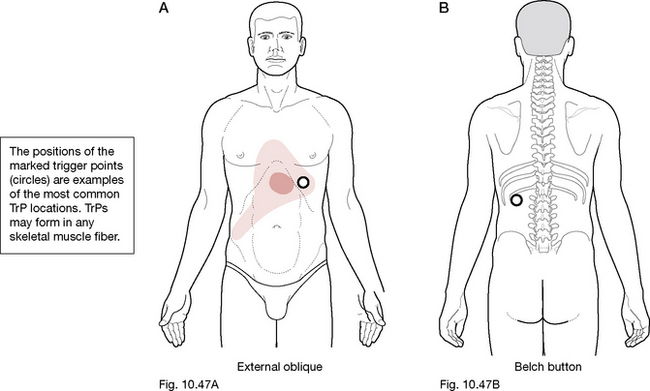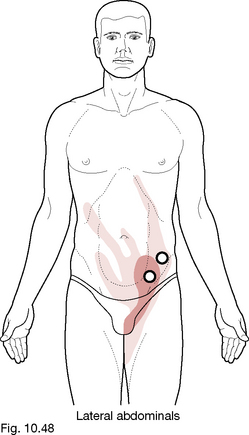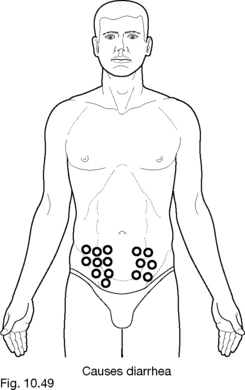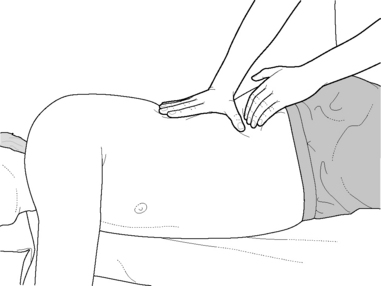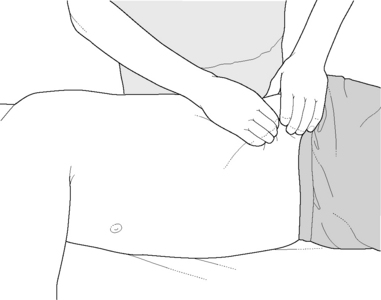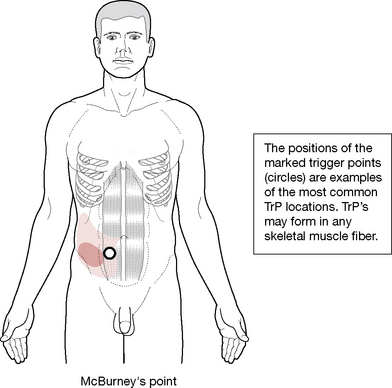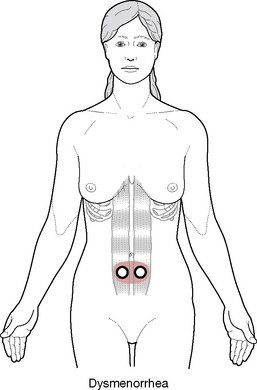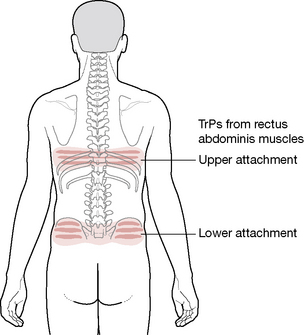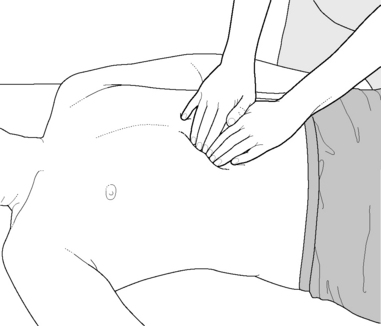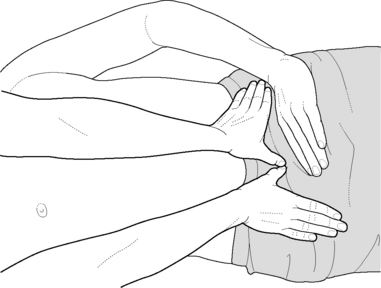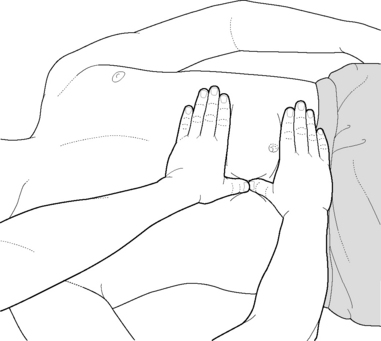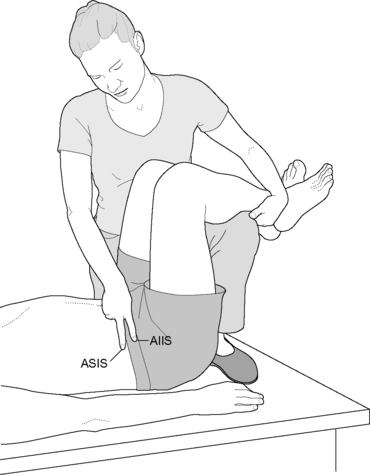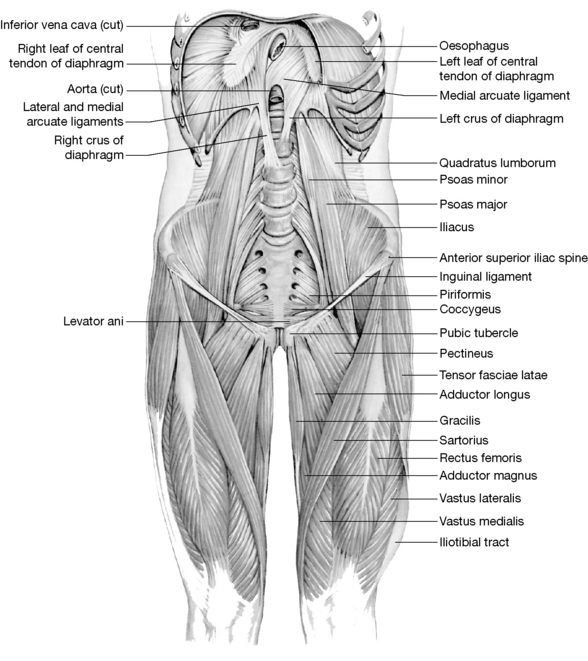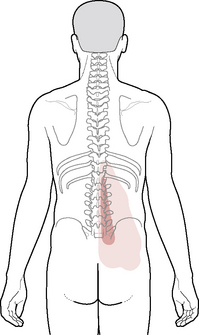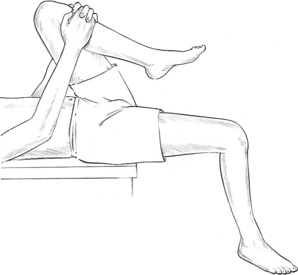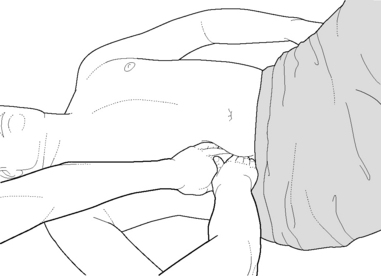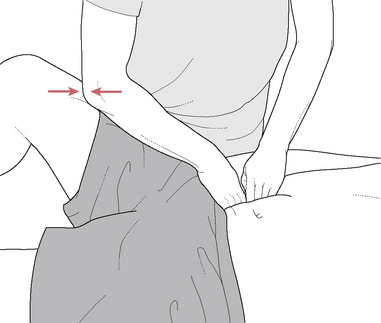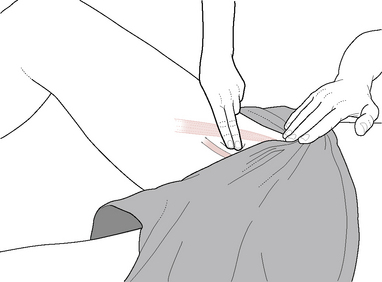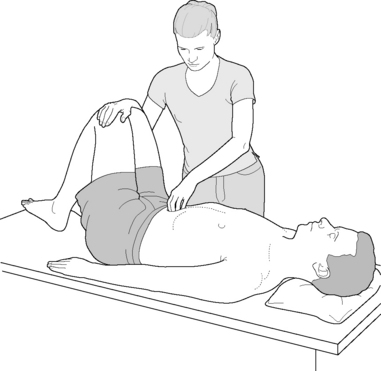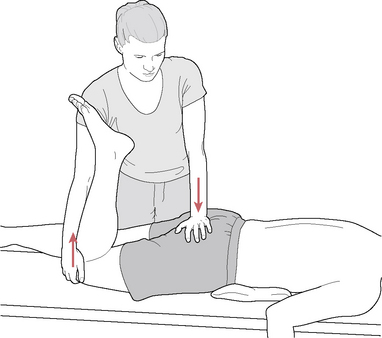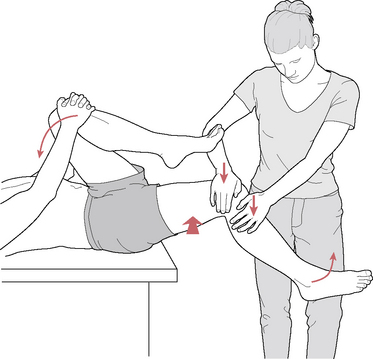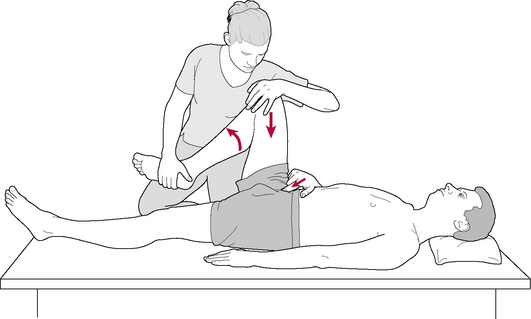Adams M., Dolan P., Hutton W. Diurnal variations in the stresses on the lumbar spine. Spine. 1987;12:111-130.
AHCPR. Management guidelines for acute low back pain. Agency for Health Research. Rockville, Maryland: US Department of Health and Human Services, 1994.
Andriopoulos P., Tsironi M., Deftereos S., et al. Acute brucellosis: presentation, diagnosis, and treatment of 144 cases. Int J Infect Dis. 2007;11(1):52-57.
Arendt-Nielson Care Policy and L. The influence of low back pain on muscle activity and coordination during gait. Paint. 1984;64:231-240.
Aspden R. The spine as an arch. Spine. 1989;14:266-274.
Baldry P. Acupuncture, trigger points and musculoskeletal pain, ed 3. Edinburgh: Churchill Livingstone, 2005.
Baldry P. Myofascial pain and fibromyalgia syndrome. Edinburgh: Churchill Livingstone, 2001.
Barnes M. The basic science of myofascial release. Journal of Bodywork and Movement Therapies. 1997;1(4):231-238.
Bartelink D. The role of abdominal pressure in relieving the pressure on lumbar intervertebral discs. J Bone Joint Surg. 1957;39B:718-772.
Basmajian J. Muscles alive. Baltimore: Williams and Wilkins, 1974.
Bergmark A. Stability of the lumbar spine. Acta Orthop Scand. 1989;230(suppl):20-24.
Biederman H., Shanks G., Forrest W., et al. Power spectrum analysis of electromyographic activity. Spine. 1991;10:1179-1184.
Biering-Sorensen F. Physical measurements as risk indicators for low back trouble over a one-year period. Spine. 1984;9:106-119.
Bogduk N. Clinical anatomy of the lumbar spine and sacrum, ed 4. Edinburgh: Churchill Livingstone, 2005.
Bogduk N. Clinical anatomy of the lumbar spine, ed 3. Edinburgh: Churchill Livingstone, 1997.
Bogduk N., Johnson G., Spalding D. The morphology and biomechnics of latissimus dorsi. Clin Biomech (Bristol, Avon). 1998;13(6):377-385.
Bogduk N., Pearcy M., Hadfield G. Anatomy and biomechanics of psoas major. Clin Biomech (Bristol, Avon). 1992;7:109-119.
Bojadsen T., Silva E., Rodrigues A., et al. Comparative study of Mm. Multifidi in lumbar and thoracic spine. Journal of Electromyology and Kinesiology. 2000;10(3):143-149.
Braggins S. Back care: a clinical approach. Edinburgh: Churchill Livingstone, 2000.
Brostoff J. Complete guide to food allergy. London: Bloomsbury, 1992.
Bullock-Saxton J. Response from Joanne Bullock-Saxton. Bullock-Saxton J., Murphy D., Norris C., et al, editors, The muscle designation debate. Journal of Bodywork and Movement Therapies. 2000;4:225-241. issue 4
Butler D. Integrating pain awareness into physiotherapy. In: Gifford L., editor. Topical issues in pain. Physiotherapy Pain Association Yearbook. Adelaide: NOI Press; 1999:1998-1999.
Cailliet R. Low back pain syndrome. Philadelphia: F A Davis, 1995.
Chaitow L. Modern neuromuscular techniques, ed 3. Edinburgh: Churchill Livingstone, 2010.
Chaitow L. Positional release techniques, ed 3. Edinburgh: Churchill Livingstone, 2007.
Chaitow L. Muscle energy techniques. ed 2. 2001. Edinburgh
Chaitow L. Muscle energy techniques, ed 3. Edinburgh: Churchill Livingstone, 2006.
Chaitow L. Fibromyalgia syndrome, ed 3. Edinburgh: Churchill Livingstone, 2009.
Chaitow L., DeLany J. Clinical application of neuromuscular techniques: volume 1 – the upper body, ed 2. Edinburgh: Churchill Livingstone, 2008.
Cholewicki J., Panjabi M., Khachatryan A. Stabilizing function of the trunk flexor-extensor muscles around a neutral spine posture. Spine. 1997;19:2207-2212.
Clemente C. Gray’s anatomy, ed 30. Philadelphia: Lea and Febiger, 1985.
Cornwall J., Harris A.J., Mercer S. The lumbar multifidus muscle and patterns of pain. Man Ther. 2006;11:40-45.
Cresswell A. The influence of sudden perturbations on trunk muscle activity and intra-abdominal pressure while standing. Exp Brain Res. 1994;98:336-344.
Cyriax J. Textbook of orthopaedic medicine, volume 1: diagnosis of soft tissue lesions, ed 8. London: Baillière Tindall, 1982.
Danino A., Guberman D., Robe N. Use of bone anchors for flap fixation in burned patients. Burns. 2010;36(3):379-382.
Deig D. Positional release technique. Boston: Butterworth Heinemann, 2001.
Dittrich R. Somatic pain and autonomic concomitants. American Journal of Surgery. 1954;87:66-73.
Doggweiler-Wiygul R. Urologic myofascial pain syndromes. Curr Pain Headache Rep. 2004;8(6):445-451.
Dowling D. Evaluation of the thorax. In: DiGiovanna E., editor. An osteopathic approach to diagnosis and treatment. London: Lippincott, 1991.
Farfan H., Gracovetsky S. The abdominal mechanism. 1981. Paper presented at the International Society for the Study of the Lumbar Spine Meeting Paris
FCAT (Federal Committee on Anatomical Terminology). Terminologia anatomica: international anatomical terminology. New York: Thieme Stuttgart, 1998.
Fielder S., Pyott W. The science and art of manipulative surgery. Salt Lake City, Utah: American Institute of Manipulative Surgery Inc, 1955.
Fryer G., Johnson J. Dissection of the thoracic paraspinal region – implications for osteopathic palpatory diagnosis: a case study. International Journal of Osteopathic Medicine. 2005;8(2):69-74.
Fryette. Principles of osteopathic technic. Colorado Springs: Yearbook of the Academy of Applied Osteopathy, 1954.
Gardner E., Gray J.D., O’Rahilly D. Anatomia – estudo regional do corpo humano, ed 3. Rio de Janeiro: Guanabara Koogan, 1971.
Gardner-Morse M., Stokes I., Lauble J. Role of the muscles in lumbar spine stability in maximum extension efforts. J Orthop Res. 1995;13:802-808.
Garrett N., Mapp P., Cruwys S., et al. Role of substance P in inflammatory arthritis. Ann Rheum Dis. 1992;51:1014-1018.
Gibbons P., Tehan P. Manipulation of the spine, thorax and pelvis. Edinburgh: Churchill Livingstone, 2000.
Gilbert C. Hyperventilation and the body. Journal of Bodywork and Movement Therapies. 1998;2(3):184-191.
Gracovetsky S., Farfan H., Lamy C. A mathematical model of the lumbar spine. Orthop Clin North Am. 1977;8:135-153.
Gracovetsky S., Farfan H., Lamy C. The mechanism of the lumbar spine. Spine. 1981;6:249-262.
Gracovetsky S., Farfan H., Helleur C. The abdominal mechanism. Spine. 1985;10:317-324.
Gray’s anatomy. Standring S., editor, ed 39. Edinburgh: Elsevier Churchill Livingstone; 2005.
Gray’s anatomy. ed 38. Elsevier Churchill Livingstone; 1995.
Greenough C. Degenerative disc and vertebral disease. Clinical Surgery. 2009;27(7):301-305.
Grieve G. The masqueraders. In Boyling J., Palastanga N., editors: Grieve’s modern manual therapy of the vertebral column, ed 2, New York: Churchill Livingstone, 1994.
Greenman P. Principles of manual medicine, ed 2. Baltimore: Williams and Wilkins, 1996.
Gutstein R. The role of abdominal fibrositis in functional indigestion. Miss Valley Med J. 1944;66:114-124.
Hides J., Stokes S., Saide M., et al. Evidence of lumbar multifidus wasting ipsilateral to symptoms in patients with acute/subacute low back pain. Spine. 1993;19:165-172.
Hodges P., Richardson C. Altered trunk muscle recruitment in people with low back pain with upper limb movement at different speeds. Archives of Physical Medicine and Rehabilitation. 1999;80:1005-1012.
Hodges P. Is there a role for transversus abdominis in lumbopelvic stability? Manual. 1999.
Hoffer J., Andreasson S. Regulation of soleus muscle stiffness in premammillary cats. J Neurophysiol. 1981;45:267-285.
Hoppenfeld S. Physical examination of the spine and extremities. Norwalk: Appleton and Lange, 1976.
Janda V. Muscles, central nervous motor regulation, and back problems. In: Korr I.M., editor. Neurobiologic mechanisms in manipulative therapy. New York: Plenum, 1978.
Janda V. Muscle function testing. London: Butterworths, 1983.
Janda V. Muscle weakness and inhibition (pseudoparesis) in back pain syndromes. In: Grieve G., editor. Modern manual therapy of the vertebral column. Edinburgh: Churchill Livingstone, 1986.
Janda V. Evaluation of muscular balance. In: Liebenson C., editor. Rehabilitation of the spine. Baltimore: Williams and Wilkins, 1996.
Jenkins D. Hollinshead’s functional anatomy of the limbs and back, ed 6. Philadelphia: W B Saunders, 1991.
Jones L. Strain and counterstrain. Colorado Springs: Academy of Applied Osteopathy, 1981.
Jull C. Active stabilization of the trunk. Edinburgh: Course notes, 1994.
Kader D., Wardlow D., Smith F. Correlation between the MRI changes in the lumbar multifidus muscles and leg pain. Clin Radiol. 2000;55(2):145-149.
Kapandji I. The physiology of the joints, vol. III: the trunk and the vertebral column, ed 2. Edinburgh: Churchill Livingstone, 1974.
Karlson K. Rib Stress fractures in elite rowers: a case series and proposed mechanism. Am J Sports Med. 1998;26(4):516-519.
Kellgren J. On the distribution of pain arising from deep somatic structures. Clin Sci. 1939;4:35.
Kim J., Lee J., Yoon J., et al. Reconstruction of the shoulder region using a pedicled latissimus dorsi flap after resection of soft tissue due to sarcoma. J Plast Reconstr Anesth Surg. 2009;62(9):1215-1218.
Knapp M. Exercises for lower motor neuron lesions. In Basmajian J., editor: Therapeutic exercise, ed 3, Baltimore: Williams and Wilkins, 1978.
Kroll S., Baldwin B. Head and neck reconstruction with the rectus abdominis free flap. Clin Plast Surg. 1994;21(1):97-105.
Kuchera M. Treatment of gravitational strain pathophysiology. In: Vleeming A., Mooney V., Dorman T., et al, editors. Movement, stability and low back pain. Edinburgh: Churchill Livingstone, 1997.
Kuchera W. Lumbar and abdominal region. In: Ward R., editor. Foundations of osteopathic medicine. Baltimore: Williams and Wilkins, 1997.
Lee J. The pelvic girdle, ed 3. Edinburgh: Churchill Livingstone, 2004.
Lee J., Hopkins V. What your doctor may not tell you about menopause: the breakthrough book on natural progesterone. New York: Warner Books, 1996.
Levine J., Fields H., Basbaum A. Peptides and the primary afferent nociceptor. J Neurosci. 1993;13:2273-2286.
Lewit K. Manipulative therapy in rehabilitation of the locomotor system. London: Butterworths, 1985.
Lewit K. Manipulative therapy in rehabilitation of the locomotor system, ed 2. London: Butterworths, 1992.
Lewit K. Chain reactions in the locomotor system. Journal of Orthopaedic Medicine. 1999;21:52-58.
Liebenson C., editor. Rehabilitation of the spine: a practitioner’s manual, ed 2, Philadelphia: Lippincott Williams & Wilkins, 2007.
Liebenson C. The quadratus lumborum and spinal stability. Journal of Bodywork and Movement Therapies. 2000;4(1):49-54.
Liebenson C. Role of transverse abdominis in promoting spinal stability. Journal of Bodywork and Movement Therapies. 2000;4(2):109-112.
Liebenson C. The pelvic floor muscles and the Silvertolpe phenomenon. Journal of Bodywork and Movement Therapies. 2000;4(3):195.
Liebenson C. The trunk extensors and spinal stability. Journal of Bodywork and Movement Therapies. 2000;4(4):246-249.
Liebenson C. Manual resistance techniques and rehabilitation. In Chaitow L., editor: Muscle energy techniques, ed 2, Edinburgh: Churchill Livingstone, 2001.
Luoto S. Static back endurance and the risk of low back pain. Clin Biomech. 1995;10:323-324.
Lyos A., Evans G., Perez D., et al. Tongue reconstruction: outcomes with the rectus abdominis flap. Plastic & Reconstructive Surgery. 1999;103(2):442-447.
Mathes S., Bostwick J. A rectus abdominis myocutaneous flap to reconstruct abdominal wall defects. Br J Plast Surg. 1977;30(4):282-283.
Mathes S., Steinwald P., Foster R., et al. Complex abdominal wall reconstruction: a comparison of flap and mesh closure. Ann Surg. 2000;232(4):586-596.
McGill S. Electromyographic activity of the abdominal and low back musculature during generation of isometric and dynamic axial trunk torque. J Orthop Res. 1991;9:91.
McGill S. Loads on spinal tissues during simultaneous lifting and ventilatory challenge. Ergonomics. 1995;38(9):1772-1792.
McGill S. Low back exercises prescription for the healthy back. Resources manual for guidelines for exercise testing and prescription. ed 3. Baltimore: American College of Sports Medicine, Williams and Wilkins; 1998.
McGill S., Norman R. Low back biomechanics in industry. In: Grabiner M., editor. Current issues in biomechanics. Human Kinetics. Illinois: Champaign, 1993.
McGill S., Juker D., Knopf P. Quantitative intramuscular myoelectric activity of quadratus lumborum during a wide variety of tasks. Clin Biomech. 1996;11:170-172.
Mackenzie J. Symptoms and their interpretations. 1909. London
Melnick J. Treatment of trigger mechanisms in gastrointestinal disease. N Y State J Med. 1954;54:1324-1330.
Mitchell F.Jr, Moran P., Pruzzo N. An evaluation of osteopathic muscle energy procedures. Valley Park: Pruzzo, 1979.
Moore K.L., Dalley A.F. Agur AMR Clinically oriented anatomy, ed 6, Philadelphia: Lippincott Williams & Wilkins; 2010:450-451.
Mulligan B. Manual therapy, ed 4. Wellington, New Zealand: Plane View Services, 1999.
Murphy D. Response from Donald R. Murphy. Bullock-Saxton J., Murphy D., Norris C., et al, editors, The muscle designation debate. Journal of Bodywork and Movement Therapies. 2000;4:225-241. Issue 4
Nachemson A. Valsalva maneuver biomechanics. Spine. 1986;11:476-479.
Norris C. Response from Chris Norris. Bullock-Saxton J., Murphy D., Norris C., et al, editors, The muscle designation debate. Journal of Bodywork and Movement Therapies. 2000;4:225-241. Issue4
Norris C. Back stability. Leeds: Human Kinetics, 2000.
Owen F. An endocrine interpretation of Chapman’s reflexes. Newark, Ohio: Academy of Applied Osteopathy, 1963.
Panjabi M. The stabilizing system of the spine. J Spinal Disord. 1992;5:383-389.
Paris S. Differential diagnosis of lumbar, back and pelvic pain. In: Vleeming A., Mooney V., Dorman T., et al, editors. Movement, stability and low back pain. Edinburgh: Churchill Livingstone, 1997.
Petty N., Moore A. Neuromusculoskeletal examination and assessment. Edinburgh: Churchill Livingstone, 1998.
Petty N. Neuromusculoskeletal examination and assessment: a handbook for therapists, ed 3. Edinburgh: Churchill Livingstone, 2006.
Pizzorno J., Murray M. Encyclopaedia of natural medicine. London: Optima, 1990.
Platzer W. Color atlas of human anatomy: vol 1, locomotor system, ed 5. Stuttgart: Thieme, 2004.
Pongratz D., Vorgerd M., Schoser B. Scientific aspects and clinical signs of muscle pain. Journal of Musculoskeletal Pain. 2004;12(3–4):121-128.
RCR. Making the best use of the department of radiology: guidelines for doctors, ed 2. London: Royal College of Radiologists, 1993.
Ranger I. Abdominal wall pain due to nerve entrapment. Practitioner. 1971;206:791-792.
Rantanan J., Hyrme M., Falck B. The multifidus muscle five years after surgery for lumbar disc herniation. Spine. 1993;19:1963-1967.
Rasch P., Burke R. Kinesiology and applied anatomy. Philadelphia: Lea and Febiger, 1978.
Richardson C. Response from Carolyn Richardson. Bullock-Saxton J., Murphy D., Norris C., et al, editors, The muscle designation debate. Journal of Bodywork and Movement Therapies. 2000;4:225-241. Issue 4
Richardson C.A., Jull G.A. Muscle control – pain control. What exercises would you prescribe? Man Ther. 1995;1(1):2-10.
Richardson C., Jull G., Hodges P., et al. Therapeutic exercise for spinal segmental stabilization in low back pain. Edinburgh: Churchill Livingstone, 1999.
Robbins T. Post-mastectomy breast reconstruction using a rectus abdominis musculocutaneous island flap. Br J Plast Surg. 2005;34(3):286-290.
Roberts T., Arefi-Afshar Y. Not all who stand tall are proud: Gender differences in the proprioceptive effects of upright posture. Cognition and Emotion. 2007;21(4):714-727.
Rothstein J., Serge R., Wolf S. Rehabilitation specialist’s handbook. Philadelphia: F A Davis, 1991.
Schafer R. Clinical biomechanics, ed 2. Baltimore: Williams and Wilkins, 1987.
Selye H. Stress without distress. Philadelphia: Lippincott, 1974.
Serizawa K. Tsubo: vital points for oriental therapy. San Francisco: Japan Publications, 1976.
Sharpstone D., Colin-Jones D.G. Chronic, non-visceral abdominal pain. Gut. 1994;35:833-836.
Shealy C.N. Total life stress and symptomatology. Journal of Holistic Medicine. 1984;6(2):112-129.
Silvertolpe L. A pathological erector spinae reflex. Journal of Manual Medicine. 1989;4:28.
Simons D., Travell J., Simons L. Myofascial pain and dysfunction: the trigger point manual, vol 1, upper half of body, ed 2. Baltimore: Williams and Wilkins, 1999.
Slocumb J. Neurological factors in chronic pelvic pain: trigger points and the abdominal pelvic pain syndrome. Am J Obstet Gynecol. 1984;149:536.
Smith H., Genesen M., Runowicz C., et al. The rectus abdominis myocutaneous flap: modifications, complications, and sexual function. Cancer. 2000;83(3):510-520.
Snijders C., Vleeming A., Stoeckart R., et al. Biomechanics of the interface between spine and pelvis in different positions. In: Vleeming A., Mooney V., Dorman T., et al, editors. Movement, stability and low back pain. Edinburgh: Churchill Livingstone, 1997.
Solomonow M. Ligaments: A source of musculoskeletal disorders. Journal of Bodywork & Movement Therapies. 2009;13(2):136-154.
Storck K., Crispens M., Brader K. Squamous cell carcinoma of the cervix presenting as lymphangitic carcinomatosis. Gynecol Oncol. 2004;94(3):825-828.
Theobald G. Relief and prevention of referred pain. J Obstet Gynaecol Br Commonw. 1949;56:447-460.
Thompson B. Sacroiliac joint dysfunction: neuromuscular massage therapy perspective. Journal of Bodywork and Movement Therapies. 2001;5(4):229-234.
Thomson H., Francis D. Abdominal wall tenderness: a useful sign in the acute abdomen. Lancet. 1977;1:1053.
Travell J., Simons D. Myofascial pain and dysfunction – trigger point manual, vol. 1: upper half of the body. Baltimore: Williams and Wilkins, 1983.
Travell J., Simons D. Myofascial pain and dysfunction: the trigger point manual, vol. 2: the lower extremities. Baltimore: Williams and Wilkins, 1992.
Tunnell P. Response from Pamela W. Tunnell. Bullock-Saxton J., Murphy D., Norris C., et al, editors, The muscle designation debate. Journal of Bodywork and Movement Therapies. 2000;4:225-241. Issue 4
Vetto J., Luoh S., Nalk A. Breast cancer in premenopausal women. Curr Probl Surg. 2009;46(12):944-1004.
Vleeming A., Snijders C., Stoeckart R., et al. The role of the sacroiliac joints in coupling between spine, pelvis, legs and arms. In: Vleeming A., Mooney V., Dorman T., et al, editors. Movement, stability and low back pain. Edinburgh: Churchill Livingstone, 1997.
Vleeming A., Mooney V., Stoeckart R. Movement, stability & lumbopelvic pain: integration of research and therapy, ed 2. Edinburgh: Churchill Livingstone, 2007.
Vleeming A., Pool-Goudzwaard A., Stoeckart R., et al. The posterior layer of the thoracolumbar fascia: its function in load transfer from spine to legs. Spine. 1995;20(7):753-758.
Waddell G. The back pain revolution. Edinburgh: Churchill Livingstone, 1998.
Wallden M. The neutral spine principle. Journal of Bodywork and Movement Therapies. 2009;13(4):352-361.
Wallwork T., Stanton W., Freke M., et al. The effect of chronic low back pain on size and contraction of the lumbar multifidus muscle. Man Ther. 2009;14(5):496-500.
Ward R., editor. Foundations of osteopathic medicine. Baltimore: Williams and Wilkins, 1997.
Werbach M. Natural medicine for muscle strain. Journal of Bodywork and Movement Therapies. 1996;1(1):18-19.
Zhao G., Ren L., RenL-Q, et al. Segmental kinematic coupling of the human spinal column during locomotion. Journal of Bionic Engineering. 2008;5:328-334.
Ziprin P., Williams P., Foster M. External oblique aponeurosis nerve entrapment as a cause of groin pain in the athlete. Br J Surg. 1999;86(4):566-568.
